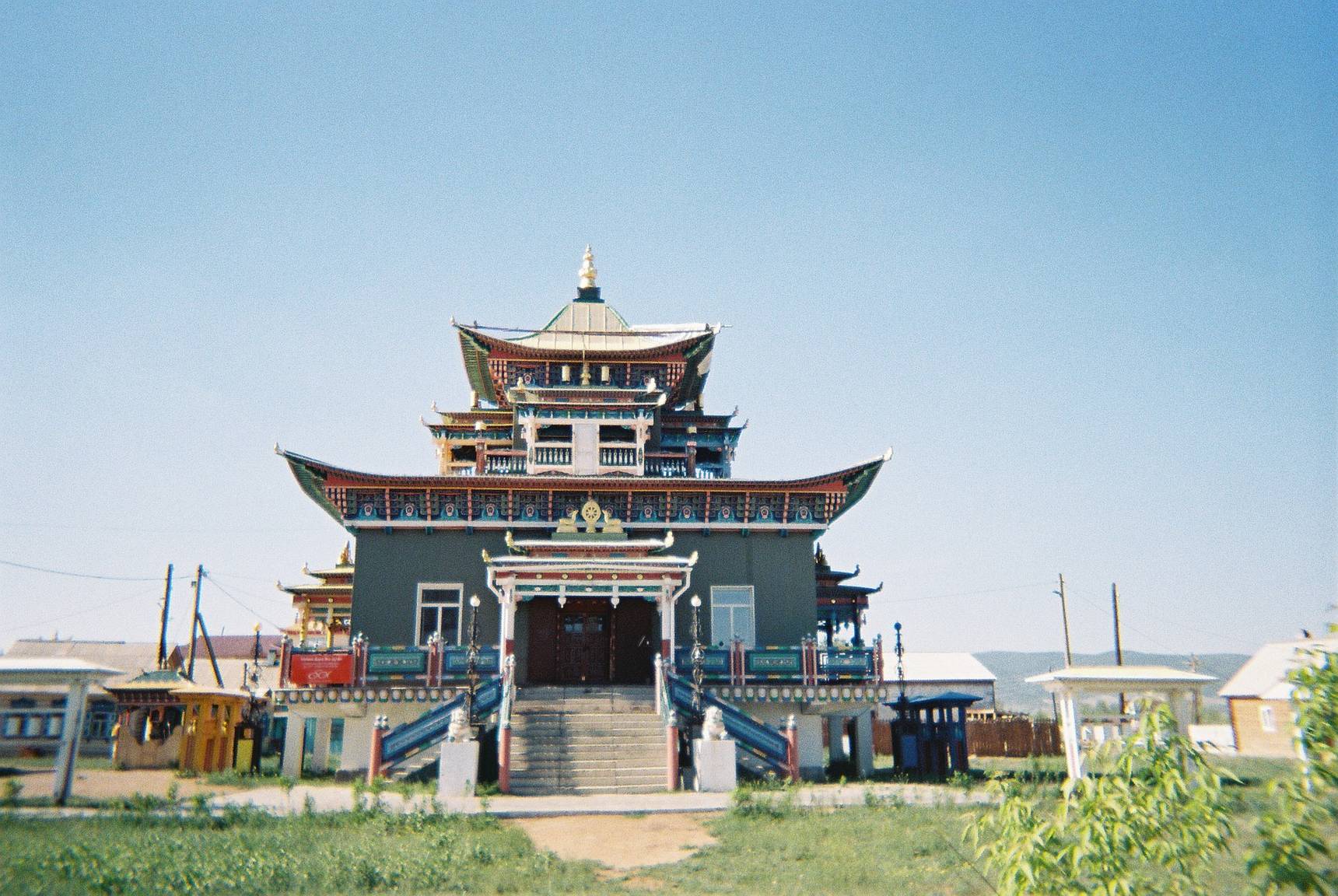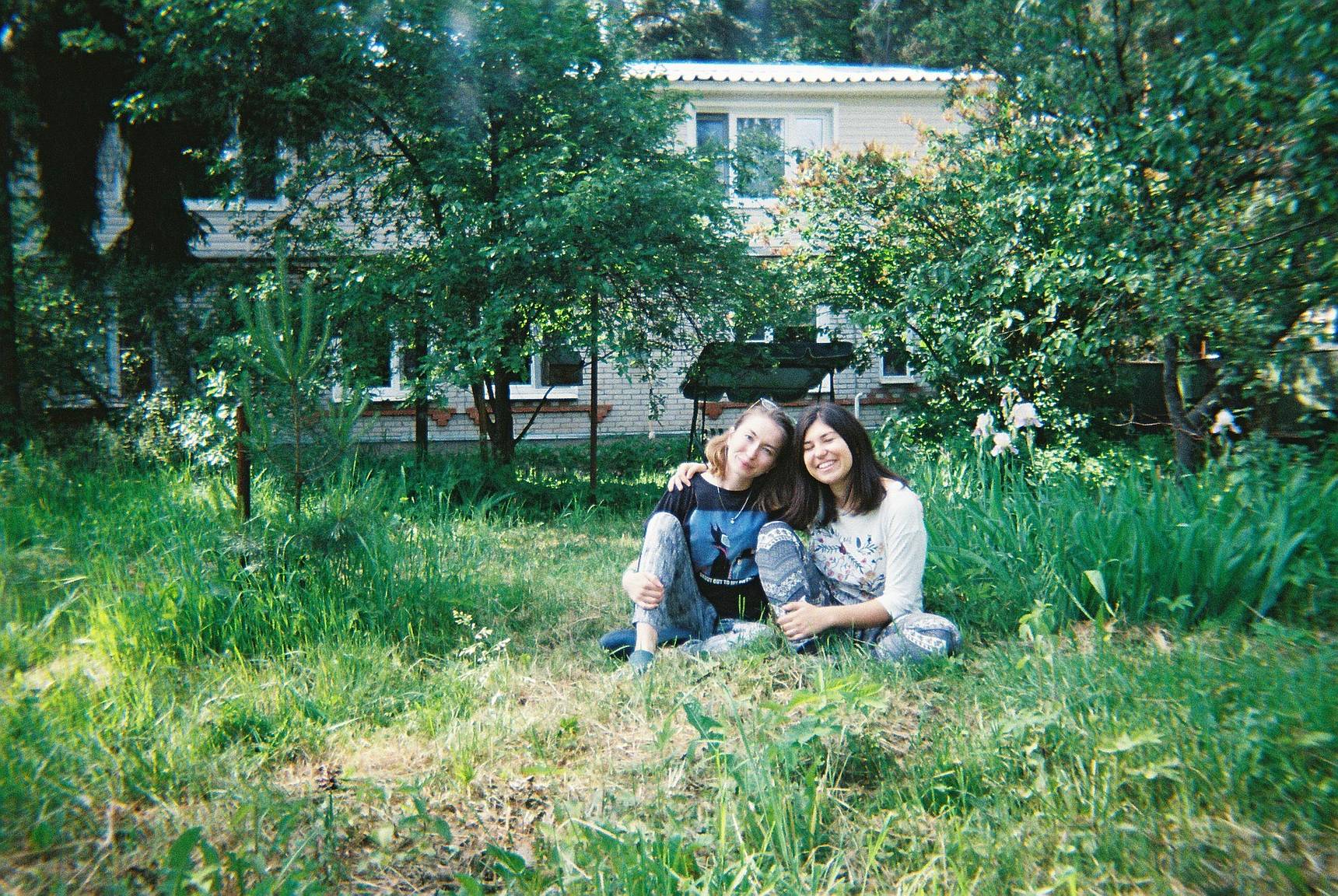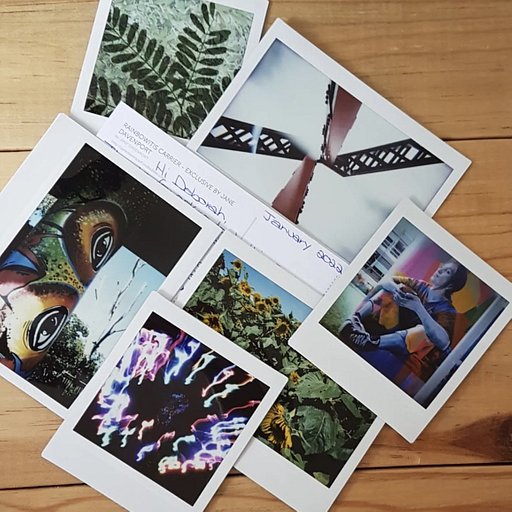“Photographing to Save from Destruction”: The Trans Siberian Journey of Eleonora
2 12 Share TweetEleonora Sacco is a linguistics graduate and traveler. Passionate about eastern Europe's culture and sights, she loves hitchhiking, camping, CouchSurfing and travel-photography. We came across her blog, where we found a deeper insight in her unusual destinations, adventurous stories on the road, travel diaries, and lots of beautiful pictures from the most remote places. Aside from giving us practical tips for backpacking, Eleonora also promotes a conscious way of traveling and as she says, “to the core of things”.
After crossing paths with her in Central Asia, We reached out to her before she began her journey on one of the longest train routes worldwide: the Transiberian train from Moscow to Vladivostok. Giving her our Simple Use Camera CN 400 to document her trip across the biggest country in the world. Starting from Moscow, Eleonora has traveled for more than 9000 km through the most remote Russian regions such as Siberia and the Sakhalin Island, before ending her journey in Vladivostok.
Hello Eleonora! By reading your blog, we fell in love with that East that you explored far and wide. How did your passion for this part of the world begin and what brings you back to those places every time?
This relentless passion for the East began when I first faced the intense relation (not always mutual) between “East” and Western Europe and with my total ignorance about its culture and history. Since then, I had to simply make up for that as quickly as possible: I suddenly got that thirst of knowledge that never faded.
I found out about that when I was 18 and I could not get my head around that no one told me before. In 2013, I finally went to Sarajevo and it impressed me so much that I looked for the emotions I felt there in all the places I go. The “New East” though, is changing so quickly that going back to the same place means traveling to a very different environment with a different landscape oftentimes. The joy lies in relieving your memories of that place while you are traveling. And certain countries, like Russia, are so huge and diverse that life would not be enough to explore it properly. Going back is often a real necessity.
Considering your experience as a travel photographer and blogger, how “photogenic” is Russia and its people?
What really struck me the first time I traveled to Russia is its “non-globalized” essence and authentically different from the West. Not in the sense that Russian culture is not westernized (it is, a bit), but in the sense that Russian aesthetic, daily life, and attitude towards life are unique and distinct from the ones outside of the former Soviet space. In Russia, everything exists in its Russian version and although 30 years have passed since the USSR collapsed, the Soviet lifestyle got so into deep in people’s lives that I believe it will never disappear.
People often have a bizarre way of dressing, the country has an aesthetic of yesteryear, especially outside of Moscow and Saint Petersburg. In general, Russian life is always characterized by spontaneity and that’s a great thing for a travel photographer.
How was to document your Transiberian trip with a camera? Which reactions did you cause in the people you met on your way and that you photographed?
The main reason why the Transiberian is an incredible journey is that you get to make legendary encounters. In Russia, there’s a great capacity of resigning yourself to fate (without complaining too much). On the Russian trains, people know how to wait, how to enjoy the passing time, how to spend a day: they chat, they make tons of questions, they offer candies to the neighbors, they drink hot tea non-stop. It is easy to get into deep in their lives and at that point, asking to take a picture is really simple.
Documenting the journey (and especially doing it in analog) has been an exciting and important mission: I decided that I would have taken a portrait picture of every host. For certain remote places, like the Sakhalin Island or the Jewish autonomous region, I also felt a bit of responsibility as I was photographing a place where not many Italians (and maybe westerners) have ever been.
The former Soviet world is an unusual place to go on holiday or simply travel to, it is often overlooked and considered to be inhospitable. What kind of experience have you had so far and what would you say to those who are still doubting what these lands have to offer? If you had to convince a passionate photographer to travel to those places?
People share stories, places get nicer and more captivating, it is possible to get in touch with the oldest and still very much alive traditions. To those who travel fast and thinking that there is nothing to learn, countries and people become harsh and tedious. These are places that need to be treated with sensitivity because their unique culture is also very fragile. My experiences, thanks to the fact that I speak Russian - lingua franca in these countries - have always been unforgettable due to the direct contact with the locals. The Pamirs’ farmers at the border with Afghanistan, the monks in the remote corners of Armenia, children in the Transnistrian vineyards, students in Kyiv’s suburbs, the pilgrims in the Russian Arctic, and the oil engineers in the Sakhalin Island…the beauty and diversity of the landscapes is nothing compared to the hundreds of people, languages, religions and traditions that you meet. The post-Soviet space is a treasure trove for those who have a thirst of knowledge and passion for forgotten populations. Exploring it deeply is still hard and requires a massive dose of study, patience, motivation, and ability to adjust, but the reward always exceeds expectations. It’s an incredible traveling experience and this is unavoidably reflected in the photography.
Traveling for a month on a slow train. Low-cost airlines are taking over the train as a mean of transport, faster and more comfortable. What fascinates you about traveling by train? How would you define your way of traveling?
I have started traveling thanks to the low fares of some airlines but it didn’t take too long to realize that a hit and run weekend in a European capital does not leave a trace as deep as when I grind kilometers overland through the countryside, deserts, magnificent valleys, and boundless forests. I guess it is natural, among travelers, a progressive evolution towards the slow journey, where there is all the needed time to reflect, enjoy moments and to listen to the people you meet on your way. The train is a perfect synthesis between two extremes: full traveling days during which you only contemplate the landscape and observe the way of living of the people traveling next to you, drinking tea and sleeping. After all, the Russian train is an essential means of transport, clean, punctual, and where nothing is missing: a totally different experience than taking a train in Western Europe, and it’s closer to my favorite way of traveling. An essential precondition in my trips is the human element, and the train emphasizes it, even more, it makes you meet people.
Every trip is prepared with care (and a lot of research) before and meanwhile, but the real “lesson” comes afterward, once you get back home. In the following months, or even years, details that I had overlooked emerge from my memory and they take new meanings, moments and encounters are defined with more clarity. So basically, the journey’s “character” gets detailed and emerges at its best.
Among the pictures of your trip there’s one that particularly caught our attention and conveyed to us a great sensation of freedom. We would like to know more about this photograph.
This picture encompasses all the emotion that I felt during the week spent on Sakhalin Island. Before getting there I was quite afraid: Sakhalin is a very remote place where only a few travelers have been, there is no foreign tourism, no much information available online and I was only inspired and relied on the Anton Chekhov’s writings of the late 19th century for the trip on this island. As soon as I got off the tiny airplane in Habarovsk/Yuzhno-Sakhalinsk, the island’s capital, I finally smelled the sea after 9,000 km on a train and I burst into tears. In Sakhalin, I was always in a good mood thanks to the amazing hospitality of the inhabitants. I got in touch with two girls on CouchSurfing who were not able to host me, but they asked their respective best friends whether they could offer me a place to stay. Nadezhda and Tatiana accepted to host me and I trusted them blindly. On the third day in the city, I was trying to understand how to get to the Okhotsk Sea by public transport, when Tatiana told me that she would have asked a friend to take us there by car after work. I trusted her once again and we jumped on Sasha’s jeep. Sasha is a photographer who was born in the north of the island and he descends from inmates brought to the island by the Zar in the 19th century. That evening I finally got out of the city and crossed the tropical forest with Tatiana and Sasha. This was the first time that I really saw the local geography in all its wild beauty and realized to have found a great travel buddy and friend in Tatiana.

In your pictures you often captured people you met on your way. How did you meet them and what kind of relations did you establish with them?
Almost all the portraits are of my CouchSurfing hosts, a website that allows you to be hosted for free anywhere in the world, I already use it for 4 years now. With the people I photographed, I built a very deep connection, I had the feeling that I have always known them and at the same time, I felt the responsibility of keeping their secrets. Being hosted by different people in different places gives those places a unique atmosphere.
I have been hosted by programmers, Russian-Japanese interpreters, supermarket cashiers, nail artists, students, import managers of Italian furniture, teachers and I got to know their families. If I made portraits of them, I tried to make them look as spontaneous as possible and in meaningful moments, when our relationship was already consolidated.
What is the subject, theme or landscape that you prefer to photograph? How did you choose subjects and landscapes to shoot during your journey?
I like taking pictures of train’s life: how people spend all those hours, how they “furnish” the shared space which becomes theirs for some days, and in general the interaction between mand and landscape. I do not only look for beauty, but I take pictures of what struck me and gives me conflicting sensations, or the Soviet aesthetic on the brink of extinction.
Many subjects have peculiar stories. One of them is the story of the liquefied natural gas plant in Korsakov. A huge white plant, which cost more than 20 billion and is located in a beautiful bay in the Southern part of the Sakhalin island, where its chimney stacks breathe fire. There are just a few of these plants in the world and this one is the first in Russia. Since its construction, Korsakov’s women go to the beach next to the plant, looking at the ships carrying away gas when the American, Japanese, and Turkish engineers have their lunch break. That is how Yulia’s aunts got married to foreigners.
Is there a picture to which you are particularly attached to and that represents you more than others?
This is Bibi, a little girl who was born in Langar, last village worthy of the name located in the Wakhan Valley. The Valley is crossed by the Panj river, which divides Tajikistan and Afghanistan. Bibi has got a lot of clever sisters but her dad named his guesthouse like the only male child, Nuriddin. Though Bibi was by far the most intelligent and surprisingly mature for her 7 years-old. At school, Bibi and the other children study Russian and English language. The few words they knew in these two languages made our communicative possibilities increase a lot. Before taking this picture, I had improvised a joint class with the children of the guesthouse. I took their English language book, it was a bad translation into Tajik of a Soviet book in which instead of the Union Jack and 2-floors buses, there were only texts about Saint Petersburg’s beauty and about Yuri Gagarin, “a hero” as the book said in bold characters. There were many children in that family, all of them incredibly curious and happy, but I was reading only for Bibi. She was firing up while replying in four languages to my quiz about fruit, vegetables and animals. At some point, thinking of making a simple question, I pointed at a big yellow lemon drawn in the middle of a fruit basket. The kids started to huddle to find the answer but Bibi knew the answer yet: banana! She yelled, jumping in air with her arms open. We laughed a lot and cuddle like two sisters. And while I was laughing, I was thinking that actually there are no bananas, nor lemons in the Wakhan Valley. That day, Bibi managed to teach me something.
To know more about Eleonora’s world, journeys and stories, visit her blog, her Facebook page, or her Instagram. We thank Eleonora once again for giving us the opportunity of interviewing her and we wish her the best for the future adventures across the world!
written by pippilangstrumpf on 2019-09-11


















































2 Comments